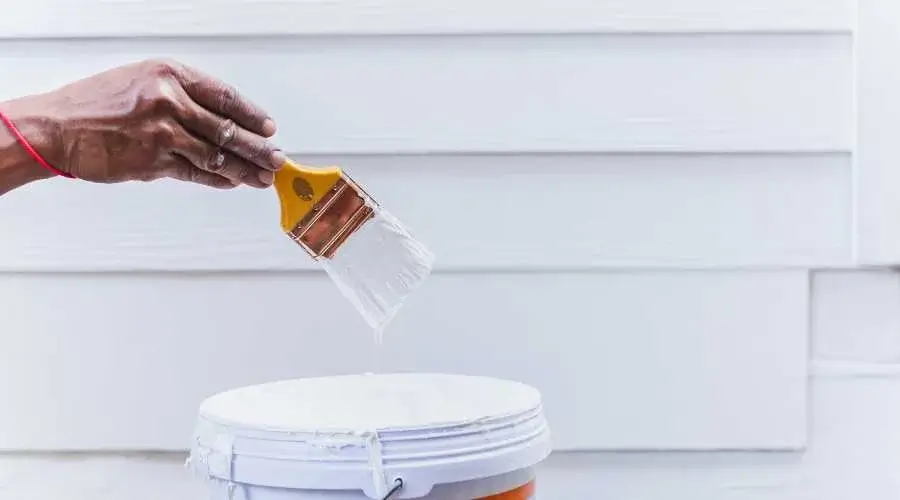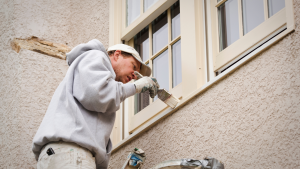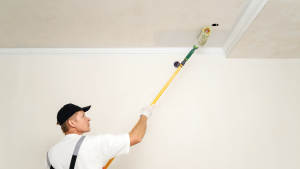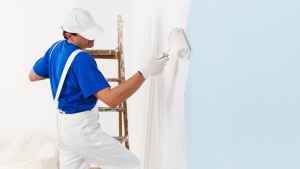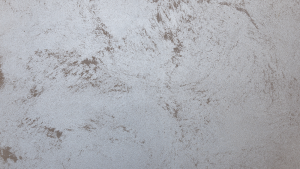You can paint the inside of your house any time of the year, but it’s ideal to save exterior painting for specific seasons.
When Did You Last Paint Your House?
Painting your home can be enjoyable because it adds color, character, and feelings to it. Painting your home should be a regular element of home care because it helps to maintain the metal, wood, and walls. Paint creates a shield that is effective at defending and safeguarding your house for years to come. The interior of your home should be painted roughly every five to ten years. Playrooms and other high-traffic areas should be painted every five years, while bedrooms can wait 8 to 10 years between coats. You should paint your home this season for reasons such as general wear and tear or moving into a property built in a time when lead-based paint was commonly utilized.
Due to the chilly weather and snow days throughout the winter, many people stay indoors. Think about it: workers in the construction, road, painting, concrete, and other industries all require rather warm and dry weather to perform their duties. You may have assumed that home remodeling was off the table when considering what to do in your house over the winter. That’s not fully accurate, though. Winter is a terrific season to do interior house improvements, and lucky for you, winter will be around for at least another month.
Though it might seem like a project to put off until the sweltering summer, reconsider! During the winter, the dry, chilly air within your house helps the freshly painted walls. Many experts advise painting your home during the winter months since inside painting needs to be done at the proper temperature. For instance, to produce a lovely even finish, the temperature of the air, the wall surface, and the paint should be between 60 and 80 degrees Fahrenheit. Pick up some painting supplies hence before the next snowfall to change the interior of your home before spring.
Interior Painting Advice
Knowing what to do and what not to do is just as important as the temperature in achieving a flawless paint job. Before you start painting your house, be sure to keep in mind the following helpful advice:
1. Price & Performance Comparison
You should constantly research pricing before deciding whether to take on painting yourself or hire a professional. It may surprise you to learn that winter weather generally results in slower business for home renovation companies if you’re trying to employ a professional painter. In turn, this results in contractors becoming more aggressive in their bids. Construction companies generally do less business in the winter, so you can find some excellent offers then. In order to avoid comparing apples to oranges, you should also compare quotes based on the types of paint or materials that will be utilized; you can do this by asking the painter what they plan to use. It is incorrect to think that contractor grade paints are superior to higher quality paints found at your neighborhood home improvement store.
Additionally, you want to evaluate the cost and efficiency of the chosen paint substance. There are numerous name brand paints on the market, some of which you might even find in your neighborhood Home Depot or Lowe’s. Behr, Benjamin Moore, Glidden, Sherwin-Williams, and Valspar are just a few of the well-known paint brands. Contractor grade, good, better, and best are all performance tiers or levels that are available for all name brand paints. Contractor grade paints are often the most affordable, followed by two to three higher tier paints with prices between $15 and $60 a gallon. We suggest you determine what paint and performance options you want for your home after you have established a budget for the job. For example, one coat hide, exceptional scrub resistance, cooking/grease resistance, high or low gloss (sheen), etc., are performance attributes of interior paints. Consumer Reports advises choosing a paint that scores Very Good or Excellent in disguising cover before choosing a gloss and hue because they found that “economy” paints don’t work effectively.
Pro Tip: Not just for painting, but for any home improvement project, hiring contractors during their off-season is a terrific way to save money. Contractors are less busy in the winter for landscaping projects, which is similar to the painting season.
2. Clean Your Walls With a Tack Cloth Before Painting
This advice is for you if you want to prepare for hiring painters or if you want to paint on your own. Make sure there is no dust or other dirt on the surface before you paint your walls, baseboards, door, or window trim. If you don’t clean these areas first, your paint may have bubbles or flaws. Cleaning the surface before painting can be facilitated by the use of a tack cloth. Tack cloths are just cheese cloths that have been coated with a sticky substance, like beeswax. It is preferable to gently wipe walls with the cloth so that any dust and lint are captured by the tacky material, but be careful not to push too hard as the wax can be spread.
Pro tip: Never skip prep; the brief time you spend doing so is nothing compared to the time you’ll need to spend correcting mistakes. If you have to paint over improperly prepared surfaces, it will take more time and cost more money in labor and materials. Nothing is more annoying than having to sand your walls and repaint them after the paint fails to adhere in some spots or has too many dust particles poking through the paint.
3. Invest on High-Quality Painting Supplies
Consider comparing price and performance with point #1. The first thing to remember is that, in most cases, you get what you pay for when it comes to pricing and performance. It should go without saying that you want to paint your house with high-quality paint and products that will apply easily, take up little space, and last for years. When it comes to choosing the perfect paint, the process can be excruciatingly difficult (just look at all the alternatives in the picture above). There are literally hundreds of options. First off, you don’t want to choose the cheapest paint you can find because it usually needs more coats, is less resistant to marring, scuffing, and scratching, and won’t last as long as more expensive paint. Instead, you should seek out high-quality paint, which is often one with more solids, improving paint build and increasing scrub/scratch/mar resistance, etc.
Investigate the paint options in your neighborhood; unless you live in a remote location, you should have access to all of the major paint brands. We advise reading internet reviews or even visiting your neighborhood home improvement store to get advice from the staff in the paint section. Do your study and don’t be hesitant to test paint brushes, rollers, and rods for lint transfers and brush fallout. You know for sure you don’t want to utilize them for a project as essential as your home if you are employing them as testers and you see that they are shedding. Foam rollers are a great alternative to the Wooster paint roller, which we normally prefer.
4. Paint Starting from the Top
Prior to anything else, begin painting your ceiling to give it time to dry. Consider that after painting the walls, you decide that the ceiling should have also been painted. You might suddenly have paint dripping from your beautifully painted walls. Next, take care of any crown molding if you have any. Try to follow a methodical procedure, create steps for yourself, and wait a little while for each painted area to dry before moving on to the next. It’s crucial to close the distance. You can do it before painting the walls, but many experts feel that for a flawless finish, it is more effective to paint the walls first. A professional tip is to use a bucket rather than a can of paint. As a result, there will be less incidents involving tipping and you won’t get a variety of colors (paint cans are more prone to this). The windows will be painted next; pay close attention to every last detail. Since window areas enable light to enter, they serve as focal points for rooms and can draw attention to flaws that you might not otherwise see. Finally, doors. Take the extra time to unhinge your doors and lay them horizontally when painting if you want a nice finish. This will enable a uniform coat.
5. Wash and Reuse Your Paint Rollers or Brushes
It can become tiresome to paint your kitchen, living room, or bedroom. There are numerous surfaces that need painting, including the baseboards, windows, door trims, and walls. You start to understand that this might end up taking two days to complete, whether it is because the sun is setting and you are losing light or you are simply feeling too exhausted. In this situation, it’s possible that you won’t want to purchase new brushes and rollers, so preserving them can help you save money and the time it would take to purchase new ones, as well as the environment by preventing the waste of more materials than you actually want. An effective tip if you plan to paint the next day was to spritz or soak brushes and rollers in water and soap. There is a limit to how many times you can do this before your brushes or rollers compress, fade, etc. This is only advised for paint jobs that are the same color and only one day apart. Multiple colors and days apart might cause the colors to mix or run on the wall, the bristles or nap to come loose, etc.
These highly efficient methods for brush and roller preservation are advised by painters. If you only want to keep them for a few hours, put them in a bag. The other method is to put them in an airtight bag and leave them at room temperature. They won’t harden because this will keep the fluid inside. Put them in the fridge. By keeping them cool, putting your brushes or rollers in an airtight bag and storing them in the refrigerator overnight can help them last longer. Before using them again, make sure you put them out and give them time to rewarm to room temperature.
Advice for Painting Your House
In conclusion, there is a time for spring cleaning and a time for painting your house. By hiring contractors during their off-season, you can get some great savings. Examine the cost and effectiveness of the paint that you or your contractors intend to employ. Prior to painting, make sure your walls are clean because preparation is everything. Always paint your ceiling first while painting, and work your way down when doing so. Additionally, you can clean and reuse your painting rollers and brushes if your painting project takes more than one day, which will save both time and the environment.

